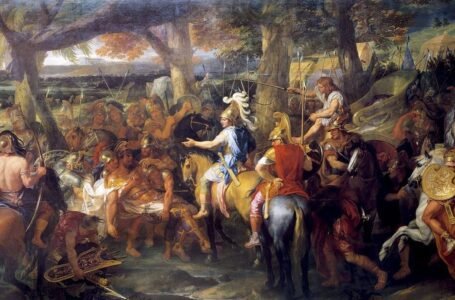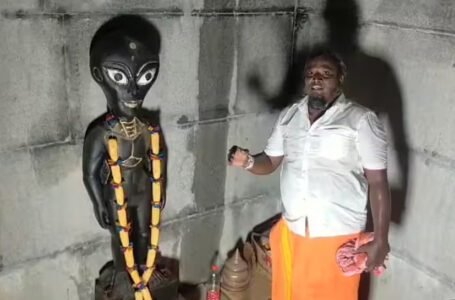Mahakaleshwar: The Unique Abode of Lord Shiva Where Time Stands Still
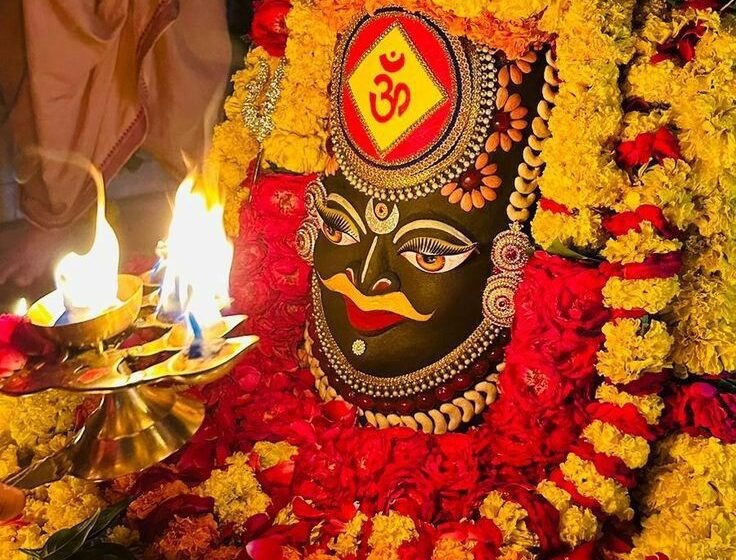
In the city of Ujjain, Shiva, the supreme deity of time, rules eternally in all his majesty. Even in the middle of the hectic daily grind of contemporary concerns, the Mahakala rules the city and its inhabitants and offers an unbreakable connection to the traditions of the ancient Hindus.
Mahakaleshwara Jyotirlinga, one of the twelve Jyotirlingas—shrine complexes considered to be the holiest places on Earth—is a Hindu temple devoted to Shiva. It is situated in Madhya Pradesh, in the historic city of Ujjain. The temple is located next to the revered Kshipra River. Shiva, the ruling deity, is said to be Swayambhu in the lingam form. Unlike other images and lingams that are ritually established and endowed with mantra-shakti, Shiva in Swayambhu form derives power (Shakti) from within itself.
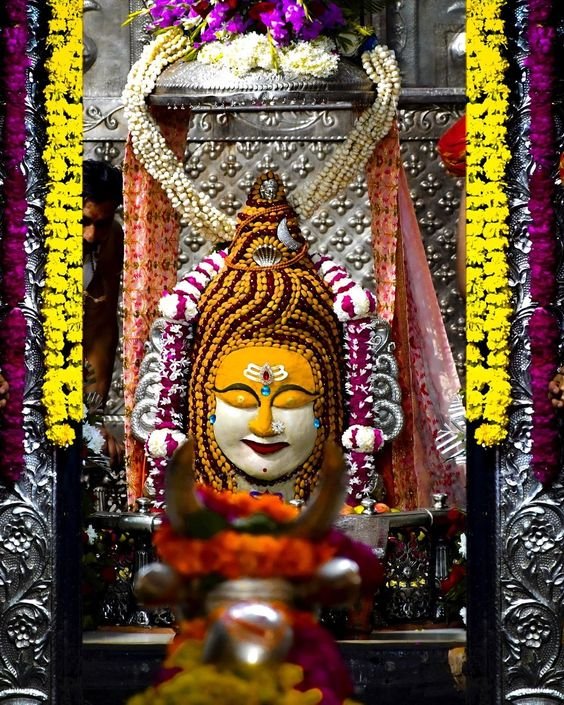
There are two Jyotirlingas in Madhya Pradesh; the second, Omkareshwara Jyotirlinga, is located roughly 140 km to the south of Mahakaleshwara Jyotirlinga.
The lingam of Mahakaleshwara is colossus. Since the idol of Mahakaleshwar is believed to be facing the South, it is known as Dakshinamukhi. This is one of the twelve Jyotirlingas’ special qualities, preserved by the tantric Shivnetra tradition and found only in Mahakaleshwar. In the sanctum above the Mahakal shrine, the idol of Omkareshwara Mahadev is dedicated. The sanctum sanctorum is surrounded by images of Ganesh, Parvati, and Karttikeya to the west, north, and east. The image of Shiva’s vehicle, Nandi, is to the south. on the third floor of the temple, the idol of Nagchandreshwara is present which is accessed only on the day of Nag Panchmi (once in a year).
The Bhasm Aarti is one of the temple’s distinctive rituals that attracts devotees from all over the world. At 4:00 am, it is done in the wee hours of the morning. Sacred ash, or “bhasm,” is applied to the Shiva Lingam during this ritual, symbolizing the inevitability of death. For those who are unaware, a mortal being is reduced to ash after death, and the custom of covering the Linga in ash represents giving up control to the divine. Ash has been referred to as Shiva’s “shringar,” and he is regarded as “Shamshan vasi: one who resides in crematoriums.” According to legends, the lord was once offered fresh ashes from crematorium grounds; nowadays, cow dung cake is burned to prepare the ash.
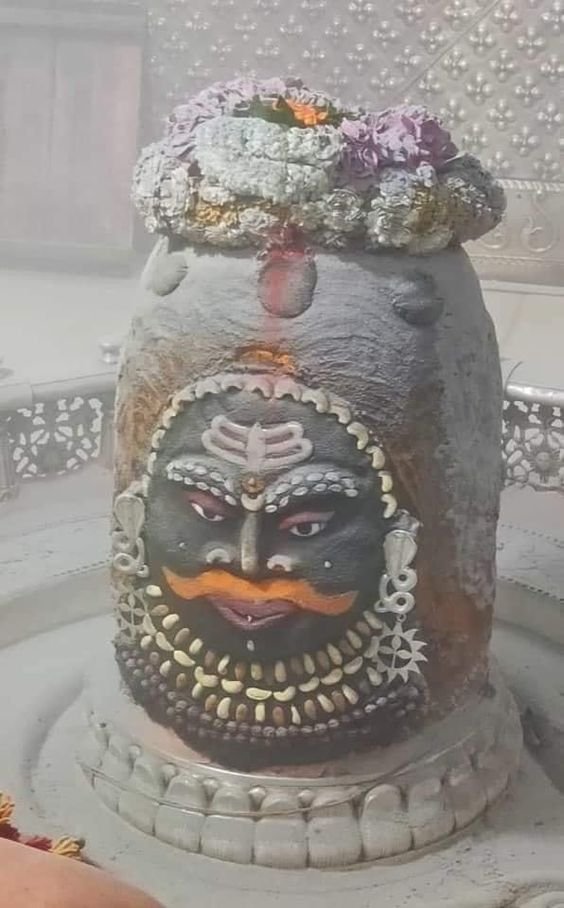
Legend has it that Chandrasena, a ruler of Ujjain, was a devout follower of Shiva and constantly adored him. When Shrikhar, a farmer’s son, heard the King recite Shiva’s name while strolling around the palace grounds, he hurried to the temple to join him in prayer. But the guards forcibly took him out and banished him to the city’s outskirts by the Kshipra River. It was around this time that Ujjain’s rivals, mainly King Ripudamana and King Singhaditya of the nearby kingdoms, decided to attack the Kingdom and seize its treasures. When Shrikhar heard this, he began to pray, and word of it reached Vridhi, a priest. After hearing this with dismay and hearing his sons’ cries for help, he began to pray to Shiva at the Kshipra River. The Kings decided to attack, and they were successful. With the aid of the formidable demon Dushan, who had been granted the ability to see in the dark by Brahma, they pillaged the city and attacked every Shiva devotee.
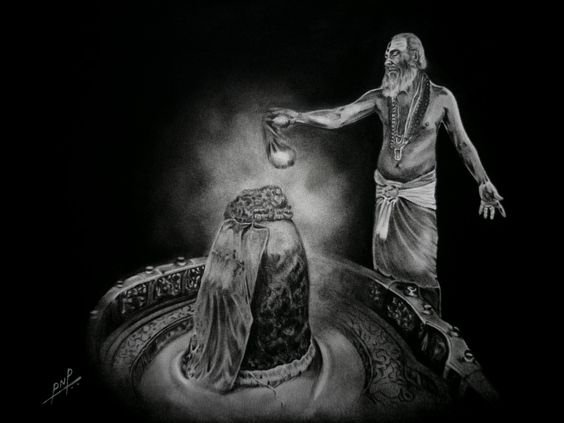
Shiva, in His Mahakala form, appeared in response to the cries of his defenceless devotees and vanquished King Chandrasena’s enemies. Shiva consented to live in the city, take on the role of the principal deity of the Kingdom, guard it from its adversaries, and provide protection to all of his devotees at the request of his followers Shrikhar and Vridhi. Shiva lived in his light form as Mahakala in a Lingam (Jyotirlinga) that spontaneously formed from the combined powers of Shiva and Parvati from that day on. Shiva also bestowed blessings on his followers and promised that those who worshipped him in this incarnation would not have to worry about getting sick or dying. In addition, they would receive material wealth and Shiva’s personal defence.
It is hard to determine the exact founding date of the Mahakaleshwara temple. However, the Puranas state that Prajapita Brahma was the one who founded it initially. There is mention of King Chanda Pradyota appointing Prince Kumarasena in the sixth century BC to oversee the Mahakala Temple’s law and order issues. Ujjain’s punch-marked coins date from the fourth to the third century BC and feature a picture of Lord Siva which can be seen today at the city’s Triveni Museum. The Mahakala temple is also referenced in a number of old Indian poetry books. These texts described the temple as magnificent and generous. Stones were used to construct the platform and foundation. The wooden pillars held up the temple. Before the Gupta era, there had been no shikhara on the temples. Most of the temple roofs had been flat. This may be the reason why Kalidasa of Raghuvansam called this temple “Niketana.” The king’s palace was located close to the temple. Kalidasa provides an intriguing account of the Mahakala temple in the opening section of the Meghadutam (Purva Megha). This Chandishwara temple seems to have been a singular work of art and architecture in its day. It is possible to determine how magnificent the town’s primary deity’s temple had been, with its multi-story gold-plated palaces and buildings, as well as its exceptional artistic grandeur. High ramparts connected to entry gates surrounded the temple. Twilight illuminated the temple complex with rows of sparkling lamps.
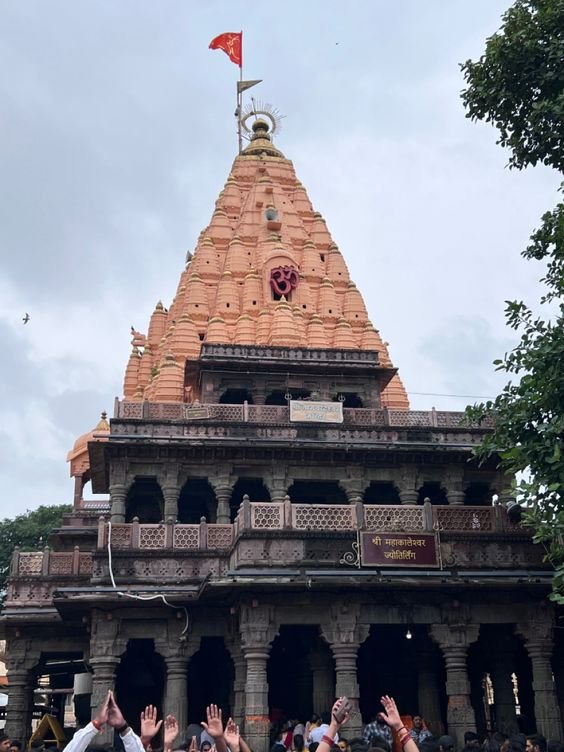
A number of dynasties, including the Maitrakas, Chalukyas, Later Guptas, Kalachuris, Pushyabhutis, Gurjara Pratiharas, Rashtrakutas, etc., controlled the political landscape in Ujjain one after another following the fall of the Gupta empire. All, however, submitted to Mahakala and gave alms and endowments to the worthy. In Avantika, numerous temples dedicated to different gods and goddesses, as well as Tirthas, Kundas, Vapis, and gardens, began to take shape during this time. This location housed a number of Shaivite temples, including those of 84 Mahadevas. It is important to emphasize that during the period when religious monuments containing images of deities dominated every corner of Ujjain, the growth and development of Mahakala temple and its surrounding religio-cultural environment were not overlooked.
Several notable poetic texts from this era highlight the importance and allure of the temple, such as Banabhatta’s Harsacharita and Kadambari, Sri Harsa’s Naisadhacharita, and Padmagupta’s Navasahasamkacharita.
Iltutmish raided Ujjain and destroyed the temple in 1234-35 AD. However, the Paramaras quickly brought new life to everything. A modern Mahakala inscription confirms that the Mahakala temple was rebuilt in the later eleventh and early twelfth centuries, under the rule of Udayaditya and Naravarman. It was constructed in the Paramaras’ preferred Bhumija architectural style. These temples were designed in the Triratha or Pancharatha plans. Such temples were primarily recognized by their shikhara and star-shaped floor plans. Concerning the shikhara, urusrangas (mini-spires), usually of odd numbers, rose up at the cardinal points from the Chaityas and the Sukanasa, finally being topped by the Amalaka. They gradually decreased in size in rows between beautifully decorated spines (haravali or lata). The temple was teeming with ornamental motifs and images. The shrine was divided horizontally into entrance, ardhamandapa, sanctum, antarala (vestibule), garbhagriha, and Pradakshinapatha, in that order, from front to back.

According to modern Silpa-sastras, these temples housed images of a variety of gods and goddesses, including Kichakas, Nava Grahas (the nine planets), female dancers, and celestial damsels, Apsaras. The temple’s sculptures were highly diverse and classical in style and were embellished with images of Ganesa, Paravati, Brahma, Visnu, Surya (Sun god), Sapta Matrikas (Seven mother goddesses), and other Saivite deities, in addition to Nataraja, Kalyanasundara, Ravananugraha, Gajantaka, Sadasiva, Andhakasura-slayer, Lakulisa, etc.
Prabandha Kosha, Vividha Tirtha Kalpataru, and Prabandha Chintamani—all written in the 13th and 14th centuries—all attest to this. Similar references can be found in the 15th-century AD manuscripts Vikramacharita and Bhojacharita. The epic Hammira Mahakavya states that during Lord Mahakala’s sojourn in Ujjain, Hammira, the ruler of Ranathambor, worshipped him. In the fourth decade of the 18th century, the Maratha regime was established in Ujjain. Peshwa Bajirao 1st gave his obedient commander Ranoji Shinde the task of overseeing Ujjain. Ranoji’s Diwan was Sukhatanakar Ramchandra Baba Shenavi. He made the decision to use his money for religious endeavours after receiving advice from numerous well-informed Panditas and well-wishers. In this regard, in the fourth and fifth decades of the 18th-century AD, he rebuilt the renowned Mahakala temple in Ujjain which stands today.
Three stories make up the modern-day temple. There are three lingams of Mahakaleshwara, Omkaresvara, and Nagachandresvara installed in the lowest, middle, and uppermost parts, respectively. The temple complex also houses Koti Tirtha, a very large Kunda. Both the Kunda and its water are revered as extremely heavenly. Numerous images depicting the sculptural magnificence of the temple constructed during the Paramara period can be found on the path that borders the Kunda stairs. The Southern side of the temple is adorned with notable architectural structures dedicated to Vrddha Mahakaleshwara, Anadi Kalpesvara, and Saptarshi.
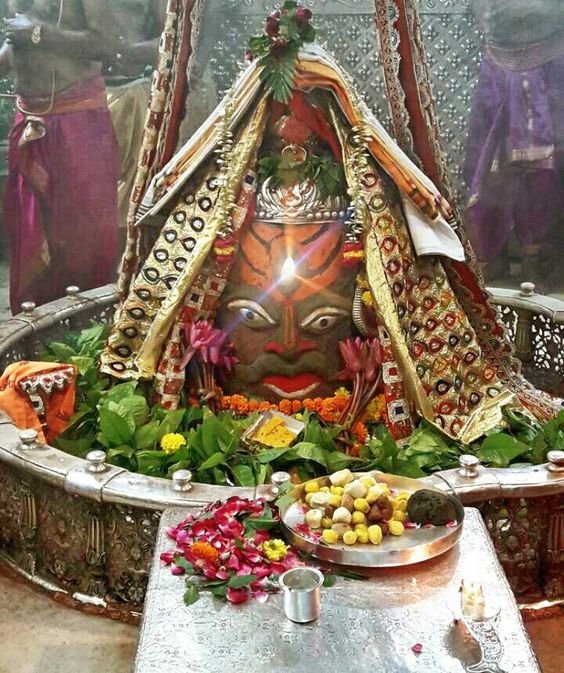
The architecture of the Mahakaleshwara temple is a deliberate fusion of Chalukya, Maratha, and Bhumija styles. The shikhara with the mini-Sringas is very peculiar. Its upper portion was covered in gold plate in prior years.
Numerous antiquated customs were also revived during the Maratha time, including worship Abhisheka, Aarti, Sawari (procession) in the Sravana month, and Harihara-milana. They are still going strong today, complete with festive ceremony and fervent devotion. Early morning Bhasmarti, Mahasivaratri, Pancha-Krosi Yatra, Somavati Amavasya, and other special religious occasions are entwined with temple rituals.
Ujjain is also home to one of the 52 Shakti Pithas. It is believed that Sati’s elbow fell here. The Harsiddhi Mata Temple is situated just behind Mahakaleshwara temple. She is also believed to be Kuladevi of the legendary King Vikramaditya who once ruled over the city.
Simhastha is organised every 12 years in Ujjain which makes the city even more holy and special. Crores of devotees throng these banks of Kshipra and take a dip in the river on this mesmerising occasion. The upcoming 2028 Simhastha would be a site to watch out for.
